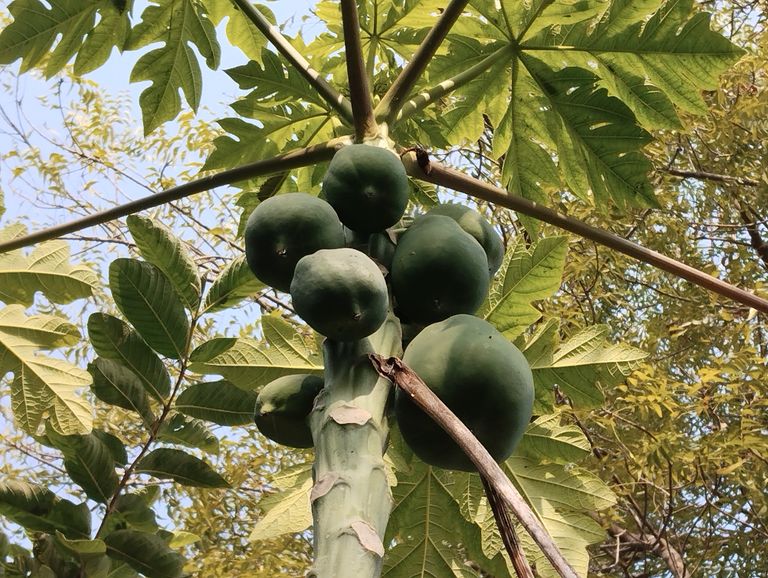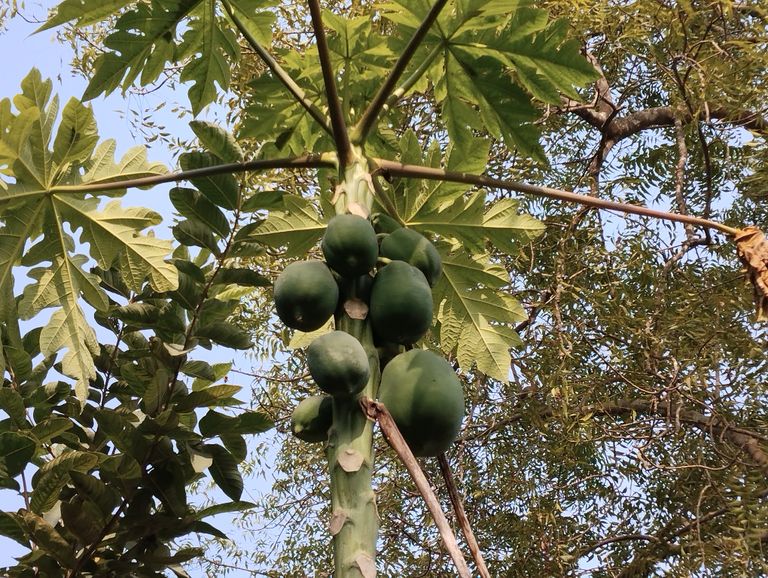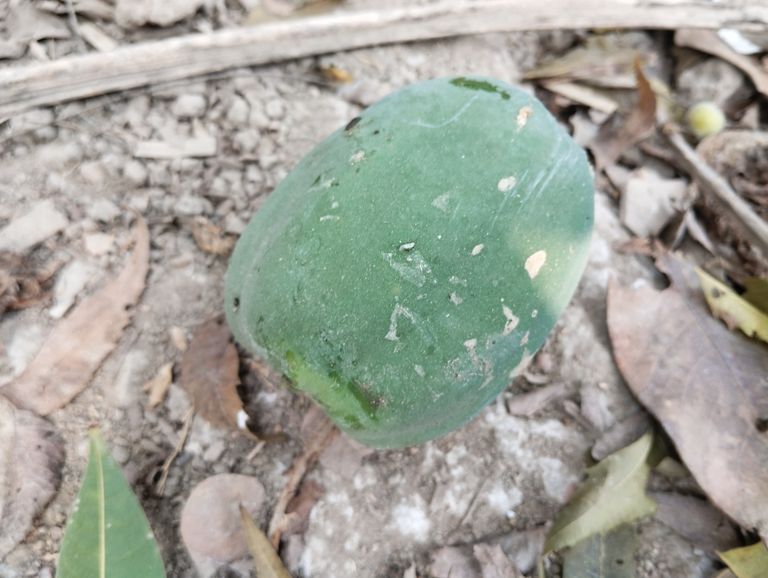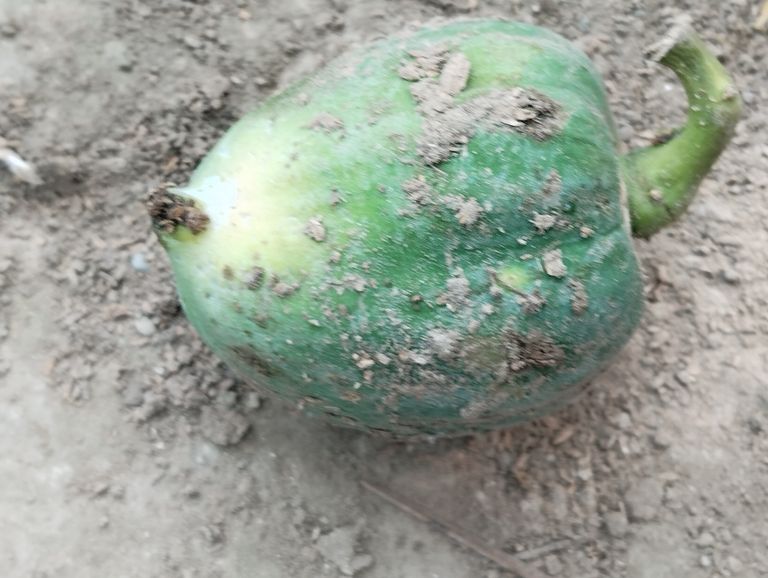
Benefits of Eating Raw Papaya.
Raw papaya, often overshadowed by its ripe counterpart, is a treasure trove of health benefits. Packed with essential nutrients and enzymes, it is a powerful natural remedy for various ailments and a great addition to a healthy diet. Let’s delve into the myriad benefits of including raw papaya in your daily meals.
- Rich in Nutrients
Raw papaya is loaded with essential vitamins and minerals. It is an excellent source of Vitamin A, C, and E, along with potassium, magnesium, and folate. These nutrients are vital for maintaining overall health, boosting immunity, and supporting bodily functions.
- Aids in Digestion
One of the standout benefits of raw papaya is its positive impact on digestion. It contains papain, a natural enzyme that helps break down proteins and promotes better digestion. Regular consumption of raw papaya can alleviate digestive disorders like bloating, constipation, and indigestion.
- Promotes Weight Loss
Low in calories and high in fiber, raw papaya is an excellent food for those looking to lose weight. It keeps you feeling full for a longer time, curbs unhealthy cravings, and supports a healthy metabolism. Its high water content also helps detoxify the body and flush out toxins.
- Improves Heart Health
The antioxidants in raw papaya help reduce oxidative stress, which can lead to heart disease. It is also rich in potassium, which helps regulate blood pressure levels. Including raw papaya in your diet can lower bad cholesterol (LDL) levels and improve overall cardiovascular health.
- Boosts Immunity
Vitamin C and other antioxidants in raw papaya play a crucial role in strengthening the immune system. A stronger immune system helps the body fight infections, reducing the risk of common illnesses such as colds, flu, and other viral infections.
- Regulates Blood Sugar Levels
Raw papaya is beneficial for people with diabetes. Its low glycemic index ensures it does not cause a spike in blood sugar levels. Additionally, its fiber content helps regulate glucose absorption, making it a safe and healthy choice for diabetics.
- Supports Skin Health
Rich in antioxidants like Vitamin C and E, raw papaya helps combat free radicals that cause premature aging. It also contains natural enzymes that can help treat skin conditions like acne, pigmentation, and wrinkles. Applying raw papaya pulp to the skin can improve texture and complexion.
- Enhances Gut Health
The dietary fiber in raw papaya promotes a healthy gut by improving bowel movements and nurturing gut-friendly bacteria. This makes it an excellent food for preventing digestive disorders and improving overall gut health.
- Reduces Inflammation
Raw papaya has anti-inflammatory properties, which can help alleviate symptoms of conditions like arthritis, asthma, and other inflammatory disorders. The papain enzyme also aids in reducing swelling and accelerating the healing process in wounds and injuries.
- Improves Eye Health
Rich in Vitamin A, raw papaya contributes to better vision and eye health. It prevents conditions like macular degeneration and improves overall eye function. Regular consumption can also help in reducing the risk of cataracts.
- Detoxifies the Body
Raw papaya acts as a natural detoxifier. It helps cleanse the liver and kidneys, promoting better function of these vital organs. Regular intake of raw papaya juice or salad can significantly improve liver health and reduce the risk of liver-related diseases.
- Balances Hormones
Raw papaya is known to regulate menstrual cycles in women. Its natural enzymes stimulate estrogen production, helping in maintaining hormonal balance. It is also beneficial in alleviating menstrual pain and irregularities.
- Fights Cancer
The antioxidants and phytonutrients in raw papaya may help in reducing the risk of cancer. They neutralize harmful free radicals in the body, preventing cell damage and inhibiting the growth of cancerous cells.
How to Include Raw Papaya in Your Diet
Raw Papaya Salad: Shred raw papaya and mix it with lime juice, chili, and peanuts for a refreshing salad.
Juice: Blend raw papaya with water or other fruits for a healthy juice.
Smoothies: Add it to your smoothies for an extra dose of nutrients.
Cooking: Use raw papaya in soups, curries, and stir-fries to enhance flavor and nutrition.
Precautions
While raw papaya is highly beneficial, pregnant women should avoid consuming it as it may induce uterine contractions. Additionally, consult a doctor if you have any allergies or medical conditions before adding raw papaya to your diet.
In conclusion, raw papaya is a powerhouse of nutrition that offers countless health benefits. Whether you eat it raw, juice it, or cook it, including raw papaya in your diet can greatly improve your overall well-being. So, embrace this natural superfood and unlock the secret to a healthier life!

Papaya Mash Recipe: A Simple and Delicious Dish
Papaya, a tropical fruit, is not only nutritious but also highly versatile in cooking. While ripe papaya is enjoyed as a sweet fruit, raw papaya is widely used in savory dishes. One such popular preparation is Papaya Mash or Peper Bharta, a dish loved in many South Asian cuisines. This blog will guide you through an easy and delicious recipe for making papaya mash, its health benefits, and some tips to enhance its flavor.
Why Choose Papaya Mash?
Papaya mash is a healthy, flavorful, and budget-friendly dish. It’s perfect as a side dish or even as a main course when paired with steamed rice. Made with minimal spices, it retains the natural flavor of papaya while being light on the stomach.
Health Benefits of Papaya Mash:
- Rich in Nutrients: Raw papaya is an excellent source of vitamins A, C, and E, along with folate, magnesium, and potassium.
- Digestive Aid: It contains papain, an enzyme that helps in digestion and reduces bloating.
- Low-Calorie Dish: Perfect for weight watchers, this dish is low in calories but high in nutrients.
- Boosts Immunity: The antioxidants in papaya help strengthen the immune system.
Ingredients
To make this simple and flavorful papaya mash, you’ll need the following:
Raw Papaya: 1 medium-sized (peeled, de-seeded, and cubed)
Mustard Oil: 2 tablespoons
Green Chilies: 2-3 (adjust to taste)
Onion: 1 small, finely chopped
Garlic: 2-3 cloves, minced
Turmeric Powder: 1/4 teaspoon
Salt: To taste
Coriander Leaves: A handful, finely chopped (optional)
Step-by-Step Recipe
- Prepare the Papaya
Peel the raw papaya, remove the seeds, and cut it into small cubes.
Boil the papaya cubes in water with a pinch of turmeric and salt until soft (about 10-15 minutes).
Drain the water and mash the papaya using a fork or potato masher. Set aside.
- Prepare the Flavor Base
Heat mustard oil in a pan until it’s hot and smoky. This step is crucial to remove the pungency of the oil.
Add minced garlic and sauté until golden.
Add chopped onions and green chilies, and cook until the onions become translucent.
- Combine and Cook
Add the mashed papaya to the pan and mix well.
Cook on medium heat for 5-7 minutes, stirring occasionally, to let the flavors blend.
Adjust salt as needed.
- Garnish and Serve
Turn off the heat and garnish with freshly chopped coriander leaves.
Serve warm with steamed rice, roti, or enjoy it as a standalone dish.
Tips for Enhancing Flavor
Add a Smoky Twist: Roast a dried red chili in mustard oil and crush it into the mash for a smoky flavor.
Tangy Kick: A dash of lemon juice can elevate the taste.
Nutty Touch: Sprinkle roasted peanuts or sesame seeds for added texture.
Serving Suggestions
Papaya mash pairs beautifully with steamed rice and lentils (dal). You can also serve it as a dip with flatbreads or crackers. For a complete meal, pair it with fried fish or grilled chicken.
Why This Recipe Stands Out
Papaya mash is a humble dish that brings together health and flavor in the simplest way possible. Its creamy texture, subtle spices, and the unique flavor of mustard oil make it a standout on any dining table. Whether you’re looking for a light lunch, a side dish, or something comforting after a long day, papaya mash is a go-to recipe.
Explore the joy of cooking with this simple papaya mash recipe and bring a taste of tradition to your kitchen. Let us know how it turns out.

Health Benefits of Eating Ripe Papaya
Ripe papaya is not just a delicious tropical fruit; it’s a powerhouse of essential nutrients and offers numerous health benefits. Packed with vitamins, minerals, and antioxidants, papaya has been celebrated for centuries for its medicinal properties. Here are the key advantages of including ripe papaya in your diet:
- Rich Source of Nutrients
Ripe papaya is loaded with essential nutrients such as vitamin C, vitamin A, folate, magnesium, and potassium. These nutrients play a crucial role in maintaining overall health, boosting immunity, and supporting bodily functions.
- Improves Digestion
Papaya contains a digestive enzyme called papain, which helps break down proteins in food, aiding in smoother digestion. It is particularly beneficial for individuals suffering from indigestion, bloating, or constipation. The high fiber content further supports a healthy digestive system.
- Boosts Immunity
With a high concentration of vitamin C, papaya strengthens the immune system and helps the body fight infections. Additionally, its antioxidants combat free radicals, reducing oxidative stress and inflammation.
- Promotes Heart Health
The potassium and vitamin C in ripe papaya help maintain heart health by reducing cholesterol levels and regulating blood pressure. Potassium also works to counteract the negative effects of sodium, reducing the risk of cardiovascular diseases.
- Aids in Weight Loss
Low in calories and rich in fiber, ripe papaya is an excellent fruit for those looking to lose weight. The fiber keeps you feeling full for longer periods, reducing unnecessary snacking and calorie intake.
- Enhances Skin Health
Ripe papaya is a natural beauty enhancer. Its high vitamin A content promotes healthy, glowing skin by reducing acne and blemishes. The enzymes and antioxidants present in the fruit can help slow down signs of aging, such as wrinkles and fine lines.
- Improves Eye Health
The beta-carotene in papaya converts into vitamin A in the body, which is vital for maintaining good vision. Regular consumption of ripe papaya can help prevent eye conditions such as macular degeneration and night blindness.
- Supports Bone Health
Papaya contains several minerals like magnesium and calcium that contribute to stronger bones. Additionally, the anti-inflammatory properties of the fruit help alleviate joint pain and reduce the risk of osteoporosis.
- Regulates Menstrual Health
For women, ripe papaya can help regulate menstrual cycles. Papain, the enzyme in papaya, supports smooth muscle contractions in the uterus, easing menstrual pain and irregularities.
- Reduces Cancer Risk
The antioxidants and phytochemicals in ripe papaya, such as lycopene and beta-carotene, have been linked to a reduced risk of certain types of cancer. They help neutralize harmful free radicals that can lead to cancer development.
- Promotes Healthy Hair
Ripe papaya is beneficial for hair health. Its rich vitamin and mineral content nourishes the scalp, strengthens hair roots, and prevents hair loss. The antioxidants also combat dandruff and scalp infections.
- Improves Mental Health
Papaya’s high vitamin C content has been linked to reduced stress and improved mood. Additionally, the folate in papaya supports brain function, enhancing focus and reducing the risk of neurological disorders.
How to Incorporate Ripe Papaya into Your Diet
As a snack: Enjoy it fresh and raw, sprinkled with a little lime juice for added flavor.
In smoothies: Blend it with other fruits and yogurt for a refreshing drink.
In salads: Combine it with vegetables or other tropical fruits for a healthy salad.
As a dessert: Use it in puddings, ice creams, or fruit-based desserts.
Ripe papaya is not only delicious but also an incredibly nutritious fruit that can benefit your health in numerous ways. Incorporating it into your daily diet can help improve digestion, boost immunity, and promote overall well-being. Make ripe papaya a part of your lifestyle and enjoy its natural goodness for a healthier, happier life.

A Comprehensive Guide to Papaya Farming
Papaya, often referred to as the "fruit of the angels," is a popular tropical fruit known for its sweet flavor, rich nutrients, and numerous health benefits. Cultivating papaya can be a profitable venture for farmers, given its high demand in both local and international markets. This blog explores the key aspects of papaya farming, from preparation to harvest.
Introduction to Papaya Farming
Papaya (Carica papaya) is a fast-growing herbaceous plant native to tropical regions. It thrives in warm climates and is cultivated widely for its fruit and medicinal properties. Papayas are rich in vitamins A, C, and E, as well as antioxidants, making them highly sought after for both fresh consumption and processing.
Varieties of Papaya
There are numerous varieties of papaya, classified based on their size, taste, and usage. The most common types include:
- Red Lady: A hybrid variety known for its high yield and resistance to diseases.
- Pusa Nanha: A dwarf variety ideal for small-scale farming.
- Washington: Preferred for its large fruits and high sugar content.
- Taiwan 786: A commercial variety popular for its consistent production.
Ideal Climate and Soil Conditions
Climate: Papaya thrives in warm, tropical climates with temperatures ranging from 22°C to 35°C. It requires plenty of sunlight and is sensitive to frost and waterlogging.
Soil: Well-drained, loamy soils with a pH range of 6.0 to 6.5 are ideal for papaya cultivation. Avoid heavy clay soils as they retain water and may cause root rot.
Land Preparation
- Site Selection: Choose a location with ample sunlight and good drainage.
- Plowing and Leveling: Prepare the land by plowing it 2-3 times to loosen the soil. Level the land to prevent water stagnation.
- Pit Preparation: Dig pits measuring 50x50x50 cm with a spacing of 2-2.5 meters between plants. Fill the pits with a mixture of soil, compost, and fertilizers.
Planting and Propagation
Propagation: Papaya is primarily propagated through seeds. Use high-quality, disease-free seeds from a reliable source.
Sowing: Sow 2-3 seeds per pit, and thin out weaker seedlings after germination. Transplant seedlings when they are 15-20 cm tall.
Spacing: Maintain a spacing of 1.8-2.5 meters to ensure proper growth and ventilation.
Irrigation and Water Management
Papaya plants require regular irrigation, especially during the dry season. Key tips include:
- Water plants once every 2-3 days during the early stages.
- Reduce irrigation frequency during the rainy season.
- Avoid waterlogging to prevent root diseases.
Nutrient Management
Papaya plants are heavy feeders and require balanced nutrition for optimal growth:
Fertilizers: Apply 200-250 grams of nitrogen, 250 grams of phosphorus, and 500 grams of potassium per plant annually. Split the doses and apply at regular intervals.
Organic Matter: Incorporate farmyard manure or compost to improve soil fertility.
Micronutrients: Supplement with zinc, magnesium, and boron to prevent deficiencies.
Pest and Disease Management
Common pests and diseases affecting papaya include:
- Pests:
Papaya mealybug: Use neem oil or insecticides.
Aphids: Control with bio-pesticides or chemical sprays.
- Diseases:
Papaya mosaic virus: Remove infected plants and control aphid vectors.
Anthracnose: Apply fungicides like carbendazim to prevent fungal infections.
Flowering and Pollination
Papaya plants are either male, female, or hermaphrodite. Hermaphrodite plants are preferred for commercial farming as they produce fruit directly. Ensure adequate pollination by maintaining a balance of male and hermaphrodite plants.
Harvesting Papaya
Papayas are typically ready for harvest 9-12 months after planting. Key indicators include:
The fruit changes color from green to yellow.
The latex flow from the fruit decreases.
Harvest fruits carefully using a knife to avoid damage.
Post-Harvest Management
- Cleaning: Wash fruits to remove dirt and latex.
- Grading: Sort fruits based on size, color, and quality.
- Packaging: Pack in ventilated cartons to prevent damage during transportation.
- Storage: Store fruits at 7°C-10°C to extend shelf life.
Economic Benefits of Papaya Farming
High Yield: Papaya plants produce 50-100 fruits per year.
Profitability: With proper management, papaya farming offers high returns.
Market Demand: Papaya is in demand for fresh consumption and processed products like juices, jams, and cosmetics.
Papaya farming is a rewarding agricultural venture that requires proper planning, care, and management. By adopting modern farming techniques and sustainable practices, farmers can achieve high yields and significant profits. Whether you are a small-scale grower or a large-scale producer, papaya farming offers immense potential in the agricultural sector.